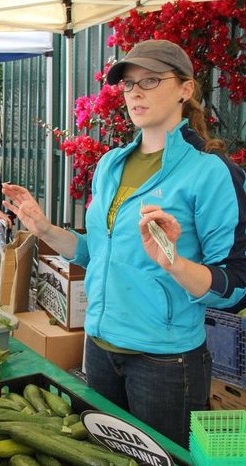This post is written in conjunction with the “Becoming a Public Scholar-Activist” course and is directed by Monica A. Coleman.
As students of CST’s online course with Dr. Monica Coleman, “Becoming a Public Scholar-Activist,” my classmates and I have been examining the question of what it means to bring our scholarship and activism into the public eye. No forum recently has brought scholarship to the public eye in a more exciting, successful way than the TED conference. TED stands for Technology, Education, and Design, and it began in 1984 as an invitation-only event where innovators in these fields were invited to share their most exciting new ideas. Like most internet phenomena, TED has become a familiar part of my life, but a few years ago, I had never heard of it. I cannot put my finger on exactly when TED became so big.
As a class, we watched and commented on a collection of 11 TED Talks from 2011 that were favorites of the TED curators, but had not received the astounding number of online views that many TED Talks receive. Indeed, I had not seen any of these talks, even though I have seen many. In preparation for writing this blog, I read the history of TED as presented on the organization website. The online presence and availability to the public began in 2006. It was probably around 2011 when I started receiving frequent e-mails from my mother with the subject line “AMAZING TED TALK!”
As my classmates and I prepared our own TED Talks, we read articles with tips on writing a successful talk. Underlying these articles was the assumption that once someone has received an invitation to give a TED Talk, he or she has arrived. Even so, there are some talks that become favorites of the TED conference, and among those only some that go viral with the online public.
Out of an exclusive history, TED has become a brand name that is coveted as a symbol of brilliance. The exclusive invitations to TED conferences were highly coveted before TED Talks became available online. Only with this reputation firmly established, did TED make the bold move of granting permission for community organizations to create their own TEDx conferences. As I reflect upon this history, it strikes me that TED as an organization did not start out with the goal of becoming an internet phenomena. Nor did most of the innovators aspire to presenting their ideas in such a forum, because they would have begun their work far before TED became a household name. I believe that part of the success of the TED format, both for the organization as a whole and for the individual speakers, is a careful consideration of timing, and patience.
Like picking a fruit when it is perfectly ripe, going public at just the right time can make all the difference. As an aspiring public scholar, I am reminded to focus on the work of developing my ideas to their fullest potential, even if no one else knows or understands what I am doing. I must build the skills for writing and speaking so that when it is time to present my ideas to the public, my presentation will be as strong as the content, but I also must be patient and trust that I will know when it’s time to “go public.”
Mary Beth Bolin is a student at Claremont School of Theology. She is working towards an Interdisciplinary MA degree, combining music with spiritual formation.















